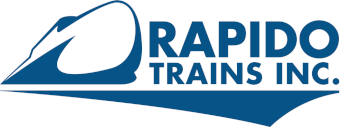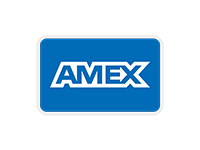By Gareth Bayer
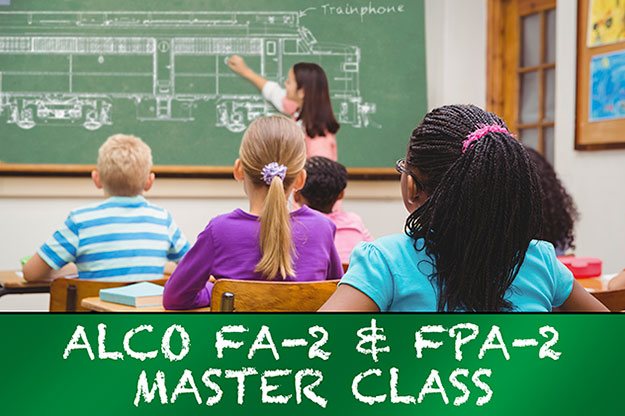
Now quiet down there at the back and listen carefully...
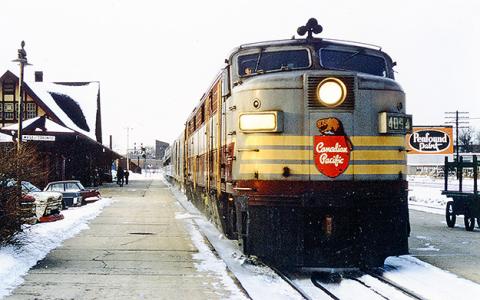
CP FPA-2 #4094 at West Toronto, ON. Photo: Dave Love collection
Alco’s “F” unit
The mighty American Locomotive Company, Alco, was second only to Baldwin in steam locomotive construction in the USA during the first third of the 20th century. It’s transition to diesel-electric locomotive technology began in 1924 using General Electric electrical equipment and Ingersoll-Rand diesel engines. Although it dispensed with the latter after acquiring engine manufacturer McIntosh & Seymour in 1929.
Alco and GE went into partnership in 1940 with an agreement to manufacturer locomotives under the Alco-GE brand at Alco’s Schenectady, New York, plant. The following year, the company introduced the innovative 539-powered RS-1 with the now common roadswitcher hood design. However, America’s entry into the Second World War the following year placed significant restrictions on the type of locomotives that Alco-GE could build, making competition with the EMC/EMD’s bulldog-nosed FT unit impossible.
This problem was compounded by a wrong turn on engine development. The aborted 241, employed only in the ‘Black Maria’ prototypes of 1945, was hurriedly replaced by the only marginally improved 244. This was used in Alco-GE’s new passenger and freight-service cab units, launched in mid-1946, as well as the next generation of RS roadswitchers, and hobbled the models from their inception. The unreliable nature of the V12 engine when first introduced created a fissure in the relationship between Alco, its partner GE, and its customers. While Alco fixed many of the issues and upgraded many early 244s to an improved specification the damage had already been done.
The new PA-1 and FA-1, along with their B-unit counterparts, shared a family resemblance, particularly that characteristic nose, that was carried through to the final FA-2 and FPA-2 design. This was developed by Ray Patten and Gordon Florian of GE’s Appearance Design Division, and was heavily influenced by the Raymond Loewy-styled Fairbanks-Morse “Erie-builts”, then being constructed by General Electric.
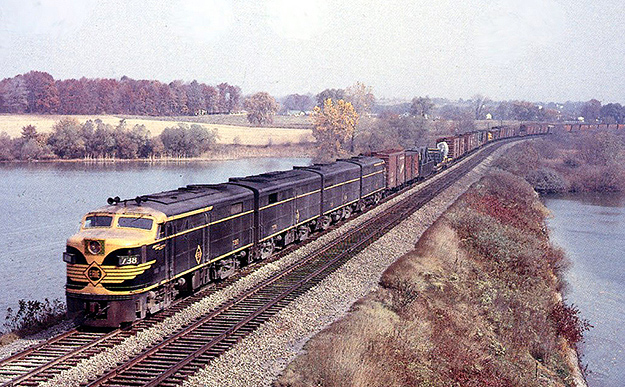
ERIE FA-2 #738 at Barberton, OH in 1952. Photo: John Long (Dan Biernacki collection)
Dual-service design
The engine was not the only area where the 1500hp FA-1 was found lacking in comparison to EMD’s rival. At the request of the Santa Fe, the FT interior was revised in 1945 to accommodate a steam generator, a feature that was impossible to fit into the cramped confines of the Alco-GE design. This could only be offered in the FB-1 units.
When it came to plan out the FA-2, space was created for a steam generator by lengthening the locomotive by two feet and moving the engine and radiator cooling group forward. Alco’s designers also moved the air cylinders and battery box compartment inside the carbody to allow a large combination water/fuel tank to be fitted between the trucks.
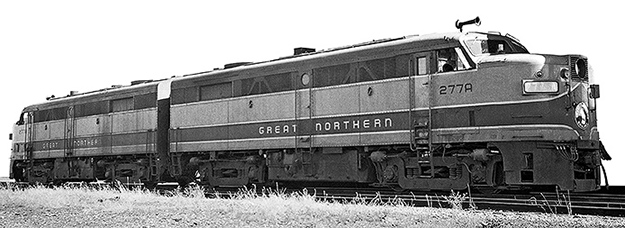
Dual-service GN FPA-2 #277A and #277B at Vancouver, BC on July 14, 1959. Photo: Walter E Frost (City of Vancouver collection)
The new FA-2 and steam generator-fitted FPA-2 locomotives were launched at the end of 1950 in the form of two ABBA demonstrator sets (with uprated 1600hp 12-244D engines and with and without steam generator). The B-units were almost identical with the exception of the lack of cab and position of the battery compartment.
Somewhat confusingly, Alco’s own model designation for both types was DL212, while the FB-2/FPB-2 was listed as DL-213. Locomotives built with the improved 12-244G engine were given the DL-212A and DL-213A designation respectively. Several US roads, particularly the Pennsy, adopted their own nomenclature just to be different, while both CN and CP had their own way of identifying their Canadian fleets.
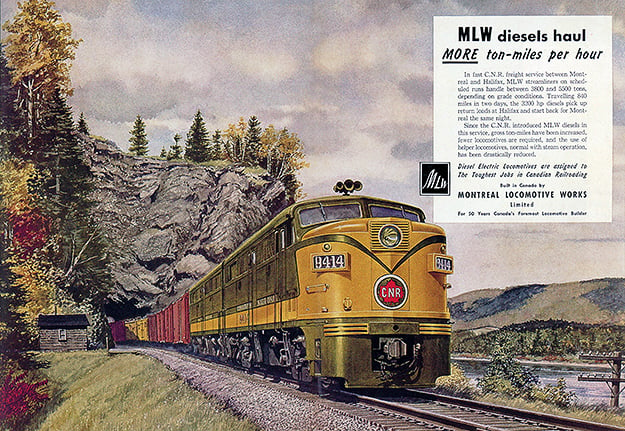
MLW FA-2 advert
As with the original FA and switcher/roadswitcher designs, construction of the second generation FA units also took place north of the border for the Canadian market. Montreal Locomotive Works (MLW) was responsible for the manufacture of locomotives under licence for Canadian National and Canadian Pacific as well as a batch for Ferrocarriles Nacionales de México.
While the EMD F7 and FP7 (four foot longer than the standard F to allow a larger water tank) proved to be a huge success, Alco-GE could only claim some consolation with second place, albeit somewhat distant. It eventually constructed some 428 FA-2/FB-2 and 106 FPA-2/FPB-2 units. While some railroads enthusiastically adopted the FA, many other orders were placed with one eye on keeping EMD honest.
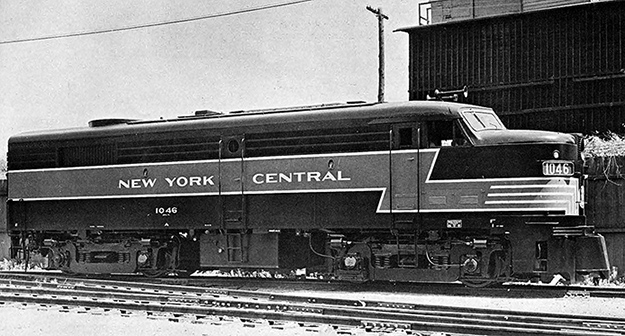
Brand new NYC FA-2 #1046 at Alco, Schenectady, NY in June 1951. Photo: NYCHS collection
The New York Central was the largest supporter of the type with 80 FA-2 and 50 FB-2, although it declined to purchase any steam generator-fitted examples. Other big purchasers include the Baltimore & Ohio (57), CN (52), CP (35), Ferrocarriles Nacionales de México (70), Louisville & Nashville (53), Missouri Pacific (102) and the Pennsylvania RR (36 in ABA formation). All except the PRR acquired both freight service FA-2s and dual-service FPA-2s.
Other notable fleets included the 14 Ann Arbor FA-2s (most later sold to the Wabash), the Erie’s eight sets of FA-2 and FB-2, the 12 Lehigh Valley units (of all types), the Spokane Portland & Seattle’s ABBA FA-2 set and Western Maryland’s four FA-2s. The Gulf Mobile & Ohio and New Haven also purchased FB-2 units only.
After their sales pitch was completed, the two ABBA demonstrators were sold on with the Chicago NorthWestern taking on the FA-2/FB-2 set, although not before Alco completed a comprehensive customisation process, while Great Northern acquired the steam generator FPA-2/FPB-2 set to join its other pair of FPA-2s.
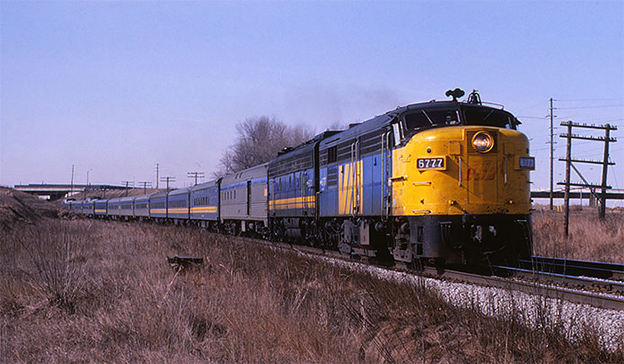
VIA FPA-4 #6777 leads between Toronto and Montreal in 1983. Photo: Kaluza-Mueller Collection
Both manufacturers continued to develop their respective cab unit designs beyond the mid-1950s, with Alco/MLW being encouraged along by CN. With the adoption of the 1800hp 251 prime mover the FPA-4 was a worthy competitor to EMD’s 1750hp F9/FP9. Sadly, by the end of the 1950s no US roads could be tempted by Alco’s revised ‘cabs’ and just 34 FPA-4 and 12 FPB-4 were constructed by MLW. However, they remained operational on VIA passenger services until 1989.
Withdrawal
More expensive to maintain than their EMD colleagues, and facing an influx of more versatile and higher horsepower locomotives from the late 1950s, many railroads were already looking at divesting themselves of the problematic FAs within a decade and a half of their arrival.
Most units had disappeared by the late 1960s, although a significant number of the NYC examples soldiered on into the early Penn Central era. The L&N and WM also made its Alco cab units last into the early 1970s. Of the other notable fleets, the B&O’s and PRR’s last units were disposed of in 1967, while just one SP&S FA-2 survived past the BN merger of 1970, although it hardly worked for its new owner.
The Canadian fleet lasted a few years longer, with CP especially wringing as much of the life out of its units as possible. The majority of CN’s fleet had disappeared in the 1960s, although two examples, the #6758 and #6759, were both rebuilt to FPA-4 specification and survived into VIA Rail service. The last CP examples were withdrawn in 1977 having survived well into the classic Multimark era.
FA-1 versus the FA-2
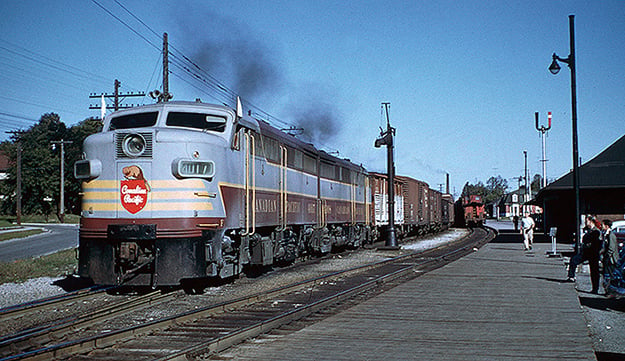
CP FA-1 #4017 Photo: Dave Love collection
Although similar at first glance to an FA-1, the FA-2 was significantly different in a number of ways. Other than the additional length, the most glaring alteration was the size and placement of the large bodyside radiator grille. A battery box access panel also appeared at the base of the body under the cab window (or at the rear of B-units), while the underbody equipment was simplified to just a fuel or fuel/water tank only.
Rather more subtle was the shape of the nose numberboards. On the original FA-1 and PA-1 locomotives these were placed on the side of the nose in a box that also included the marker lights. These were later separated and the now larger numberboard box moved further forward with rounded edges like an F-unit. This was changed again for the FA-2/FPA-2 with more distinct squared off edges.
Phase differences
The second generation FA/FPA design was also revised several times during its six-years in the Alco catalogue between October 1950 (Erie 736A) and June 1956 (L&N 211). There are three accepted railfan “phase” designations, as follows:
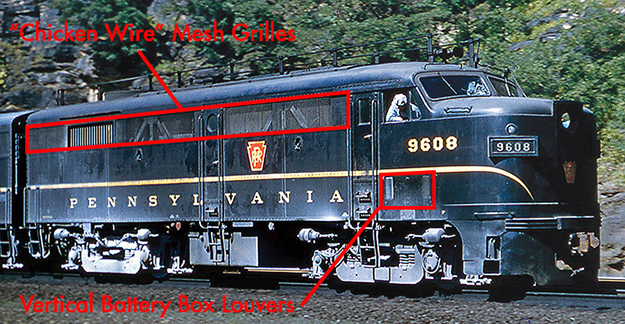
Phase Ia PRR FA-2 #9608 at Horseshoe Curve, PA on September 13, 1958. Photo: William D Volkmer

Phase II CP FPA-2 #4083 at Quebec Street, London, ON on December 17, 1967. Photo: Helmut G Ostermann (Dave Love collection)
Phase 1a: Mesh bodyside grilles and vertical battery box louvers
Phase 1b (from May 1951): With horizontal battery box louvers (some Phase 1a were upgraded to this specification, notably the CNW’s former demo units and the early B&O examples)
Phase 2: With Farr bodyside grilles
Road-specific differences
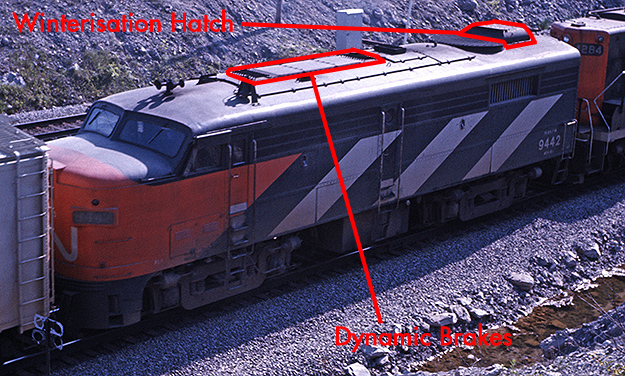
CN FA-2 #9442
Like the original FA-1, all types of the FA-2 could be specified with or without dynamic brakes. In the USA and Canada, railroads that choose dynamic brakes included the Ann Arbor, B&O, CN (FA-2/FB-2 only), CP, ERIE, GN, LV, NYC, PRR, SP&S and the Western Maryland. The non-dynamic users were CN (FPA-2/FPB-2 only), L&N and Mopac.
Never one to turn down a sale, Alco was happy to further customise its locomotives to suit a particular railroad’s specification. While this mostly manifested itself in the various multiple unit equipment sockets and piping fitted, other railroads were more demanding.
The Pennsylvania RR’s two batches of FA-2s were fitted with the inductive Trainphone antenna system from new on the A-units only. They were specified with red marker lights at the top rear corners, while both the PRR and NYC examples also wore coupler covers at the front of the locomotive.
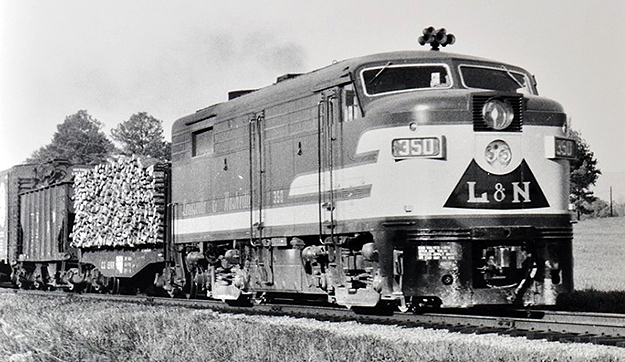
L&N FPA-2 #350 at Rydal, GA on June 4, 1954.
The Old Reliable’s (L&N) FA/FPA units were immediately recognisable thanks to the standard dual Pyle-National headlights mounted in the nose door and oscillating "Gyralight" located in the upper headlight housing. The Ann Arbor/Wabash fleet had an identical arrangement, although there were MU sockets positioned in the grille either side of the "Gyralight. Meanwhile, the CNW’s ex-demo set had a red Mars emergency light, but this was retrofitted to a non-standard position on the door soon after delivery.
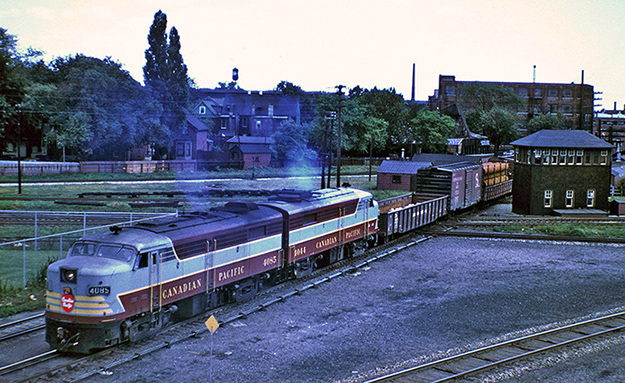
CP FA-2 #4085 and #4044. Photo: Dave Love collection
Both CN and CP also specified winterisation hatches for their fleets. CN opted for a single hatch, with a small version mounted behind the radiator fan on the FA-2s and a larger example mounted forward of the fan on the FPA-2s. CN’s FAs also had rear ladders and a short running board to access the radiator fan area. Meanwhile, CN’s FPAs had a large box on the roof above the engine compartment. CP’s set-up was different again and its fleet sported a pair of hatches fitted fore and aft of the fan grille.
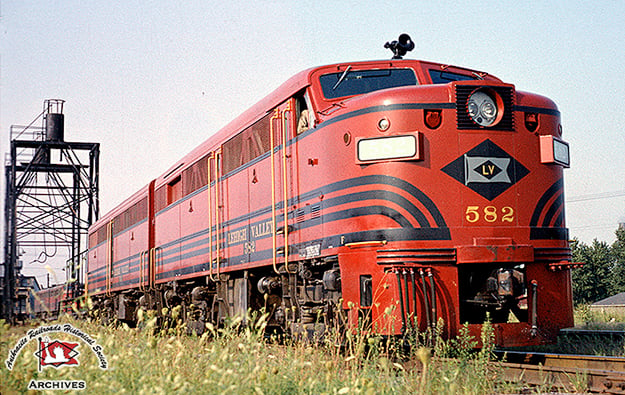
LV FA-2 #582 at Manchester, NY on July 15, 1959. Photo: Anthracite Railroads Historical Society collection
On a safety related note, B&O, LV and NYC locomotives were all fitted with some form of ATS shoe. Other RR-specific differences included the position and number of flag holders, speed recorder equipment, wind deflectors, sunshades, antennas (Sinclair, firecracker, etc), grab position and back-up lights on the rear. Many of these details were also subject to alteration over the life of the units.
Blowing in the wind
Most Alco FA units were outshopped with a pair of Wabco E2 horns positioned on the roof of the cab in a forward/reverse configuration. However, the first group of 12 PRR locomotives were fitted with a Nathan M3 horn unusually configured with all bells forward. The second order had the Leslie S-3J horn in a more standard formation.
The L&N’s fleet seems to have received the Nathan M5 (all bells forward) from new, although examples were later fitted with a confusing array of different types, including the same Hancock air whistle famously used on New Haven’s FL9s. The Western Maryland went one better with two sets of M5s on the cab roof, mounted in forward/reverse style. They must have sounded fantastic at grade crossings!
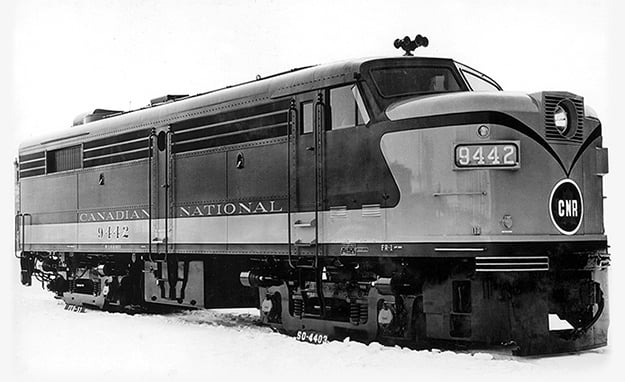
CNR FA-2 #9442. Photo: CNRHA collection
In Canada, CN’s fleet was originally fitted with the Holden Airchime M3 (built under licence from Nathan), also with all bells forward. From 1958 they also saw the signature CN bell start to be moved from inside the carbody to the roof. CP’s M3, meanwhile, was configured with only one of the bells facing forward.
Fuel and fuel/water tanks
There were broadly four configurations of underbody tanks on the second generation FA units. The Schenectady-built FA-2/FB-2, along with CN’s MLW fleet, all received a standard 1200 gal fuel tank. However, CP’s FA machines were fitted with a fabricated tank of identical capacity. The major spotting feature of this design are the two large flanged end plates.
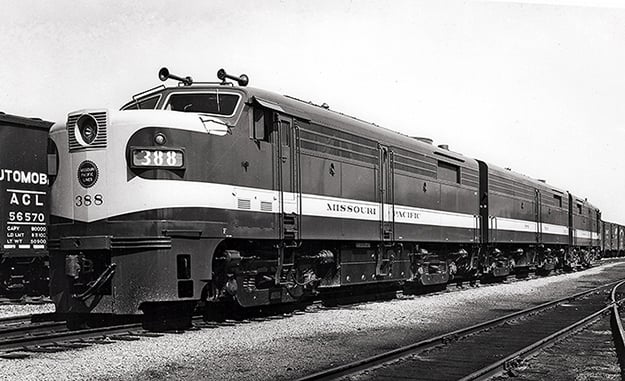
MP FPA-2 #388. Photo: Missouri Pacific Historical Society
On the FPA-2s, the US-constructed locomotives had a dual fuel-water tank that carried 1200 gallons of fuel and the same amount of water for the steam generator, one mounted below the other. The MLW version was completely different with distinctive angled sides that included a cut-out for the center door footsteps.
Details, such as fillers, gauges and washout plugs, on all four types of fuel and fuel/water tank differed from railroad to railroad.
Changes during their lifetime
Towards the end of 1953 the original GE RD air-cooled turbocharger (with off center exhaust port) was replaced with an Alco 510 water-cooled design. The GE turbocharger was adapted from aircraft usage and was found to run excessively hot inside a locomotive carbody. The blame game between Alco and GE that followed caused the end of the 13-year manufacturing partnership.
The new proprietary Alco turbocharger meanwhile resulted in a repositioned centred exhaust stack that was turned 90 degrees from the original. Some of these were modified at Schenectady, while Alco also provided “kits” for railroads to modify their own locomotives.
A more minor design flaw in the nose area meant that the front traction motor blower often drew air through the cab creating terrible draughts, which could be unbearable in winter. Several railroads, such as the LV, PRR and WM, added a pair of extra intakes on an ad hoc basis to combat this.
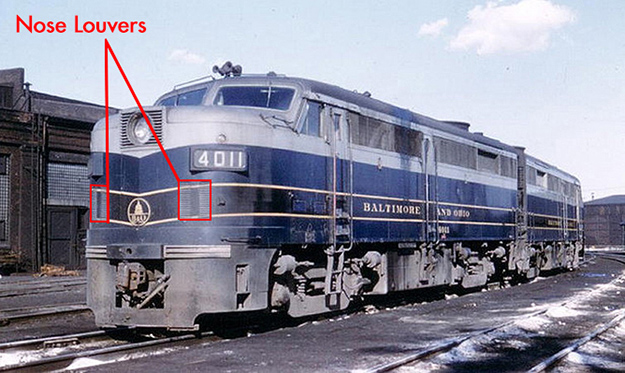
B&O FPA-2 #4011 at Willard, OH in 1962. Photo: Hoosier Hobbies collection
The B&O and ERIE modifications were more extensive, with the former adopting two pairs of tall louvers on the front of the nose for most of its fleet, while the Erie units had large rectangular mesh grilles behind the numberboards.
A number of railroads fitted nose side grabs to their units to improve access to the top of the nose. This included the AA, LV, NYC, PRR and WM. All modified FAs also had the rear of the pilot cut away on the engineer’s side the accommodate an angled step. The SP&S FAs also had the grabs and step, but mounted on the conductor’s side.
On the L&N access to the top of the nose was performed via a ladder fixed to the side. The ERIE units were also a little different, and these received a set of grabs mounted on the front of the locomotive to assist connecting the nose top MU jumper.
Another alteration that took place, often quickly, was the removal of the diaphragm at the rear of the units.
Survivors
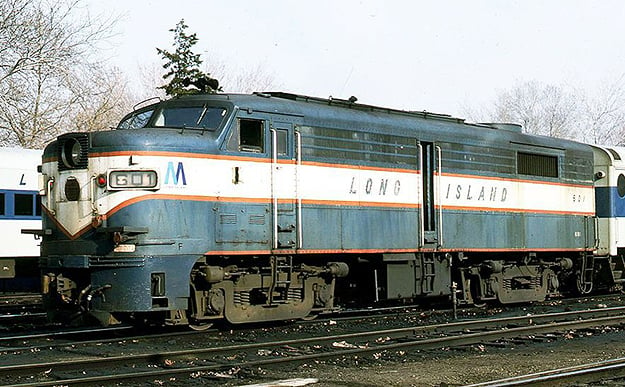
LIRR FA-2m #601 was rebuilt by GE in 1971 from L&N 317. Photo: Charles Trapani Jr (Don Ross collection)
In the early 1970s General Electric in New Jersey rebuilt 11 former NYC, L&N and WM FA-2 units as Class PC-6 HEP control cabs for the MTA Long Island Railroad, otherwise known as FA-2m. This was part of a programme that also included eight ex-New Haven and SP&S FA-1s and, somewhat later, four ex-Milwaukee and B&O F7A locomotives.
The main alteration was a derating of the 244 engine to 600hp to provide HEP. Initially, the external changes were limited to the addition of large MU brackets above the pilot. Tail lights came a little later. From 1981, smaller Detroit Diesel engines fitted to easily removable “sleds” replaced the Alco power unit and the modified locomotives were immediately obvious as the roof access hatches were raised to accommodate the new equipment.
The fleet was gradually replaced starting in 1986 and the last run took place in the summer of 1999. Of the nine surviving Alco-constructed FA-2 units, eight (L&N 309, 310, 314, 315 & 319, NYC 1102 and WM 302, 303) were saved as a direct result of working as control cabs for LIRR. LIRR 3100, ex-LIRR 608, nee WM 304 is reportedly still on the LIRR roster as an emergency generator, albeit sans cab.
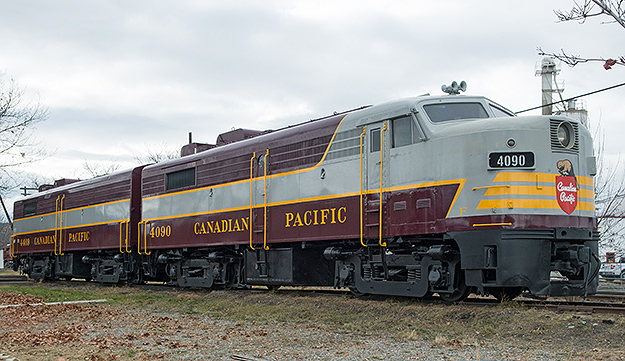
Restored CP FA-2 #4090 and FB-2 #4469 at Cranbrook, BC in October 2014. Photo: Dave Love
Just four MLW-built units still exist. The closest to as built condition are FA-2 CP 4090, which has been restored into original Canadian Pacific maroon, and FB-2 CP 4469. Both are at the Canadian Museum of Rail Travel in Cranbrook, BC. They are joined by the only two examples of FPA units preserved, ex-CN/VIA FPA-2u NY&LE 6758 in Western New York and heavily modified remote control car BCOL RCC2, former FPB-2 CN 6854, at the Prince George Railway Museum in BC.
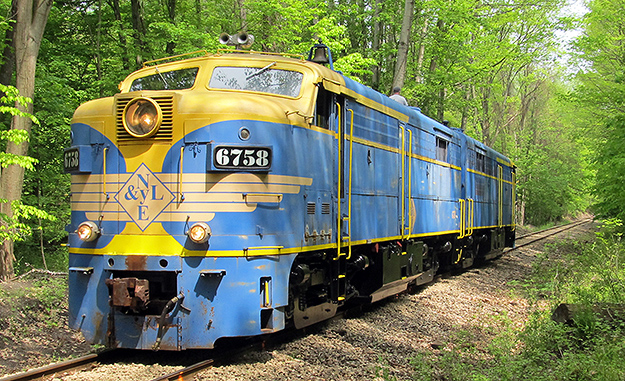
Former CN/VIA FPA-2u #6858 is now based at the New York & Lake Erie with FPA-4 #6764. Photo: Bill Schneider
Further reading
- HOLLAND, Kevin J (1999) An FA Epilogue, CNR’s MLW Covered Wagons, Part 1: Passenger Service Locos, CN Lines, Volume 9, Number 4
- HOLLAND, Kevin J (2000) An FA Epilogue, CNR’s MLW Covered Wagons, Part 2: Freight Service Locos, CN Lines, Volume 10, Number 2
- MISCHKE, James (2000) Baltimore & Ohio Alco Road Power, Diesel Era, Withers Publishing, Volume 11, Number 6 (November/December 2000)
- PECK, David (1990) Diesel Data Series Book 2: Alco FA-2, Hundman Publishing
- PLAZZOTTA, Ronald A (1991) Alco FA2 and FB2 Spotting Guide, RailModel Journal, September 1991
- RUTHERFORD, R Craig (2005) Alco’s FA, Running in the Shadow, Four Ways West Publications (ISBN 978-1885614674)
